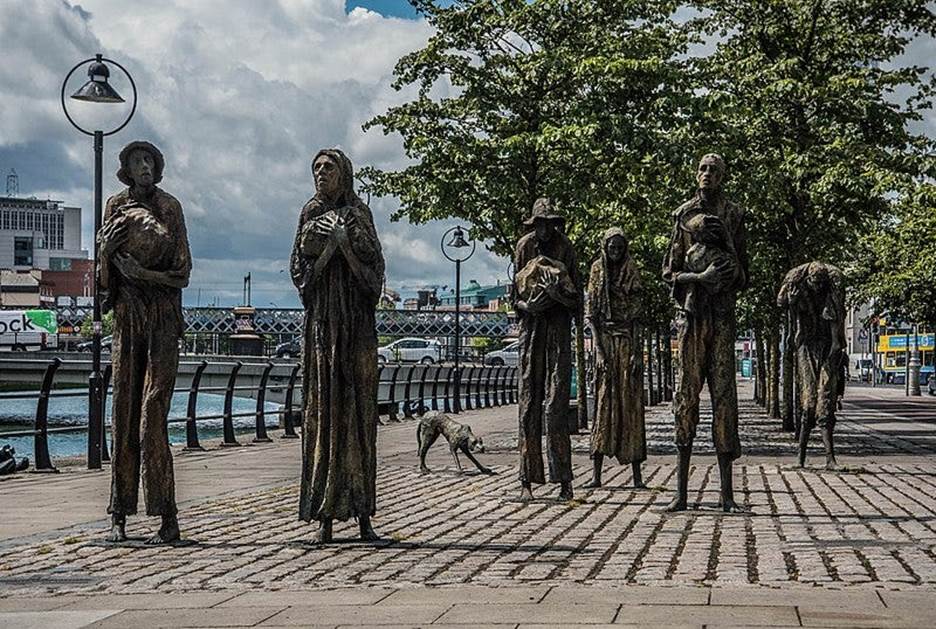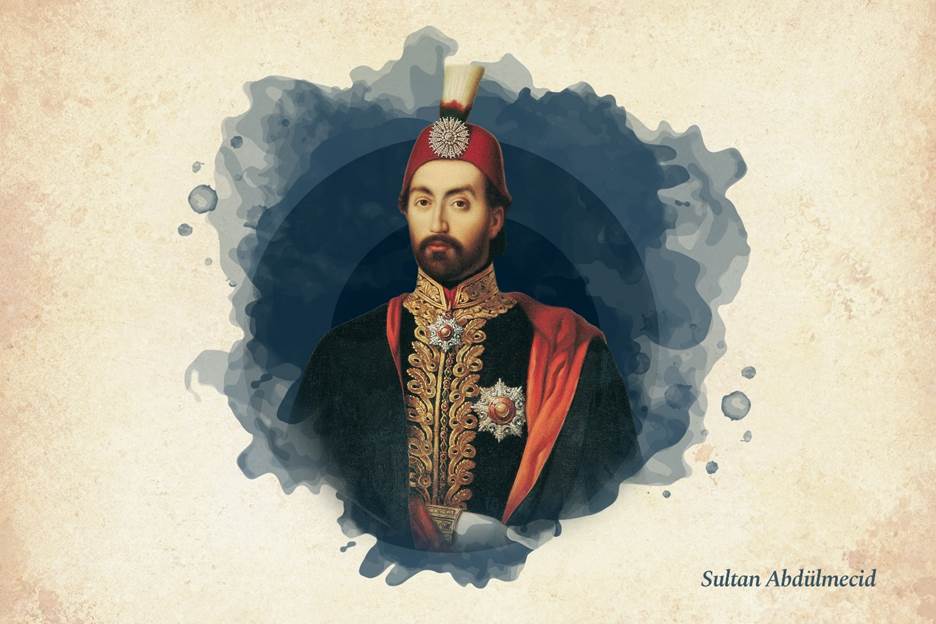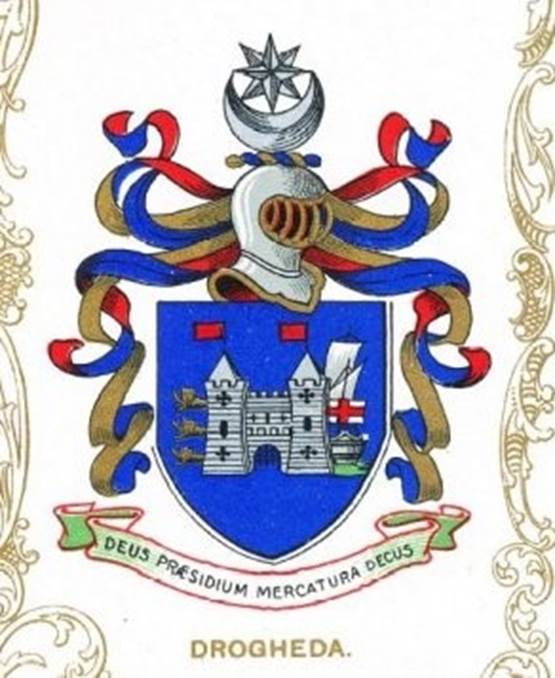
The Great Famine in the mid-19th century was one of the most devastating events in Irish history - Medium
Great Potato Famine & Turkish Sultan
By Dr Khalid Siddiqui
Ohio

During a trip to Ireland in 2017, I visited the sculptures and memorials in Dublin dedicated to the Great Potato Famine (1845-1852). It is located on the northern bank of the River Liffey between Sean O’Casey and Talbot Memorial Bridges.
The Great Famine in the mid-19th century was one of the most devastating events in Irish history. The potato was a staple item of food in Ireland. The Famine was caused by a fungus (Phytophthora infestans), also called blight, which destroyed Ireland’s main food crop. The other crops, grown by tenant farmers on their British landlords’ property, went to pay the rent and were destined for export. More than 1 million people died of starvation or from related diseases. Another one to two million emigrated – mostly to America, and others to Canada and Australia. The Irish population was suddenly cut by almost a third (from 8.4 million to 6 million). By 1900, emigration further reduced the population to 4 million.
Ireland had been under British control since the 12th century. There had been a series of rebellions and uprisings for self-rule or independence by the Catholic, Gaelic-speaking Irish farmers against the Protestant, English-Speaking landowners. The British government, therefore, did nothing to help the starving people of Ireland. It blamed the famine on overpopulation!
Whatever little help came was from a few private British philanthropists. Observing the suffering, English businessman and philanthropist James Hack Tuke said that people in the worst-affected areas were "living, or rather starving, upon turnip-tops, sand-eels and seaweed, a diet which no one in England would consider fit for the meanest animal."

Ottoman Sultan Abdulmejid I
Ottoman Sultan Abdulmejid I learned of the sufferings of the Irish people from his Irish dentist. He felt sorry for them and decided to send help. He was only 23 years old in 1847. At first, he wanted to donate £10,000 to the starving people of Ireland. It created an embarrassing situation for the British Ambassador, Henry Wellesley, in Constantinople, Turkey. The British diplomat advised him that it would be offensive for anyone to offer more than Queen Victoria, who had only donated ₤2,000. So, the British government refused to accept the Sultan's generous donation. It was suggested that he should donate half of that amount, so he gave ₤1,000.
The Sultan’s donation was appreciated by the public in Britain and Ireland as well. One English religious journal published an article titled “A Benevolent Sultan” in which the author wrote, “For the first time a Mohammedan sovereign, representing multitudinous Islamic populations, manifests spontaneously a warm sympathy with a Christian nation.” The press blamed the British diplomats in Constantinople for rejecting the initial donation of ₤10,000 just to avoid embarrassing Queen Victoria.

The hungry people of Drogheda were overjoyed when they saw the Turkish ships arrive with so much food. They were so grateful that they decided to incorporate the Islamic and Ottoman symbols into the city's coat of arms. It is also seen in the emblem of the local football team, Drogheda United. Drogheda United and Trabzonspor, a Turkish Super League team, became sister clubs in 2011
The Sultan then secretly sent six shiploads of food, medicine and other supplies for the poor Irish who were dying of hunger and disease. Predictably, the British government was not amused, and its Navy blocked the arrival of aid to the port cities of Dublin and Cork. So, the Ottoman ships bypassed the blockade and traveled further north to deliver the aid to the harbor of Drogheda in May 1847. The hungry people of Drogheda were overjoyed when they saw the Turkish ships arrive with so much food. They were so grateful that they decided to incorporate the Islamic and Ottoman symbols into the city's coat of arms. It is also seen in the emblem of the local football team, Drogheda United. Drogheda United and Trabzonspor, a Turkish Super League team, became sister clubs in 2011.
Though Abdulmejid hadn’t expected any kind of returns on his aid, some Irish rallied to his side in 1854, just two years after the famine ended. Britain had become involved in the Crimean War to defend Ottoman territory against an expanding Russian Empire. In addition to Irish nurses and engineers (and some of the first war journalists in history), about 30,000 Irish soldiers served in the war. They were noticed to be serving enthusiastically in defense of the territory of the sultan who had helped them in their time of the greatest need.
This show of compassion was even remembered during the First World War, when British officers complained that the Irish soldiers did not want to fight the Ottomans by recalling the story of when the Ottoman Empire helped the Irish people when no one else did.

